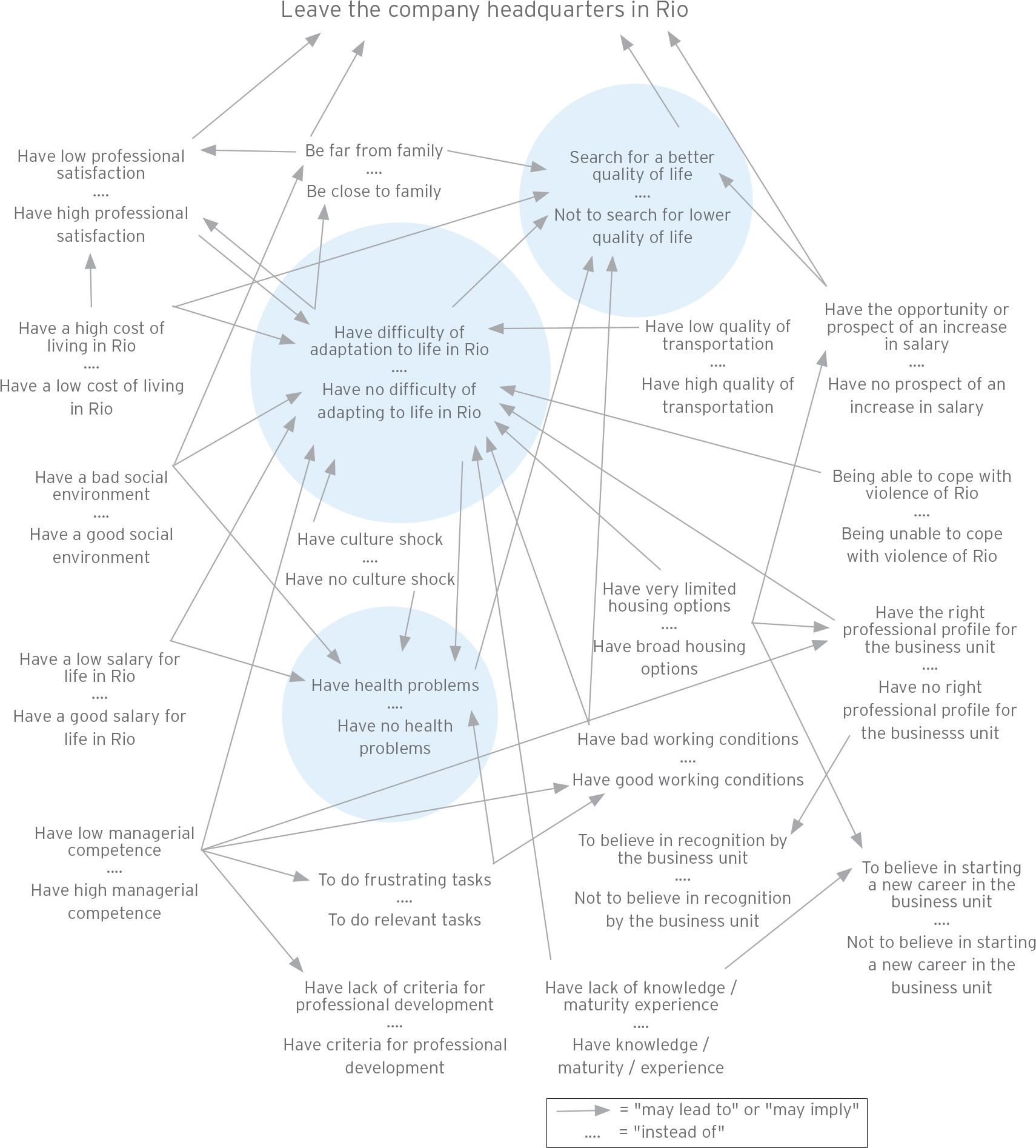SYNTHESIS / ANALYSIS TECHNIQUE • RESEARCH DELIVERABLE
12 Cognitive Mapping

Cognitive mapping is a visualization of how people make sense of a particular problem space. It is most effective when used to structure complex problems and to inform decision making.1
Cognitive mapping is an information visualization technique that can be used as a decision-and sense-making tool. Its purpose is to reveal how people think about a problem space, and visualize how they process and make sense of their experience. As the map builds, the participant’s subjective patterns of reasoning can be revealed and the underlying nature of the problem exposed.
Like concept maps and mind maps, cognitive maps are visual-thinking tools that represent a network of ideas and associations. All three are used to organize a complicated (and usually messy) information space so that the relationships between concepts can be identified, more fully explored, shared, and reflected upon. However, even though similarities exist across visual-thinking techniques, cognitive maps have a few distinctive qualities. Primarily, cognitive maps were designed specifically as a decision-making tool that can inform strategic direction.2 The format and structure require no central node (or concept) that works as the focus of the visualization, and they rarely include imagery. Instead, the nodes of a cognitive map are made up of the exact words and phrases spoken by participants.
Each node can have as many incoming and outgoing associations as necessary, and this flexibility is how the most salient concepts are quickly identified.3 The nature of the links in a cognitive map communicate cause and effect. They are to be read as node x may lead to node y or node x may imply node y. Another attribute specific to cognitive maps is that concepts can be monopolar or bipolar: which allows for the expression of nuance and “shades of gray.”4 As these poles often represent significant issues or choices, the ability to visually connect them is a powerful means of considering the range of challenges associated with a problem space.5
Cognitive mapping can facilitate the note-taking process during interviews, and when transcribing text-based qualitative data. Cognitive mapping gets easier with experience, and novice mappers should try practicing the technique using existing transcripts or taped interviews before applying it in the field.6 The technique has been used for agenda and strategy development,7 and when “group” maps are produced that weave together multiple points of view, the maps can serve as a powerful consensus-making tool. The guidelines around building cognitive maps are purposely written to remain flexible. The use of the tool can be considered successful when it provides a scaffolding to think about, explore, and create new constructs of meaning that help people and groups achieve problem resolution.
1. The cognitive mapping technique is grounded in George Kelly’s personal construct theory. Personal construct theory holds that in an attempt to anticipate and predict future events, humans make sense of the world by creating subjective classifications—or personal constructs. By differentiating concepts, we create meaning, and can intervene as necessary to get what we want from the world—a “predict and control” view of how the world works. See George Kelly’s two-volume opus:
Kelly, George. The Psychology of Personal Constructs (Volumes 1 and 2). New York: Norton, 1955.
2. For an explanation of how to codify text-based documents and create cognitive maps, see:
Ackermann, Fran, Colin Eden, and Steve Cropper. “Getting Started with Cognitive Mapping” in The Young OR Conference, University of Warwick, 1992: 65–82.
Eden, Colin, and Fran Ackermann. Making Strategy: The Journey of Strategic Management. Thousand Oaks, CA: Sage Publications, 1998.
3. “What’s In A Name? Cognitive Mapping, Mind Mapping, Concept Mapping,” www.banxia.com.
4. See note 3 above.
5. See note 2 (Ackermann, Eden, and Cropper) above.
6. See note 2 (Ackermann, Eden, and Cropper) above.
7. See note 2 (Eden and Ackermann) above.
8. Gomes, Luiz Flávio Autran Monteiro, Luís Alberto Duncan Rangel, and Rogério Lúcio Jeronimo. “A Study of Professional Mobility in a Large Corporation Through Cognitive Mapping.” Pesquisa Operacional 30, no. 2 (2010): 331–344.

Cognitive maps reveal people’s underlying agendas and decision-making criteria. Researchers in Rio constructed this cognitive map based on questionnaire responses of employees who are considering leaving a company headquarters in Rio to return to their Brazilian state of origin. The most salient concepts are the ones with the most connections to other concepts.8
Cognitive Map courtesy of Luiz Flávio Autran Monteiro Gomes, Luís Alberto Duncan Rangel, and Rogério Lúcio Jerônimo
